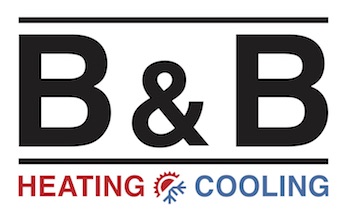
The worldwide spread of COVID-19 has likely shifted your daily routine into a jumble.
When things feel uncertain you can take comfort in knowing your house is your safe space. You’re possibly spending more time there nowadays. As a result, your indoor air quality is now more critical than ever.
Did you realize we can install indoor air quality products in your residence that offer hospital-grade filtration? These solutions can eliminate bacteria from your air, as well as allergens, odors and volatile organic compounds (VOCs).
Modern houses are tightly sealed, which is great for energy efficiency. But it also means your home’s air can be worse than the air outside. In reality, the EPA says it can be two to five times worse than outdoors. This may cause a problem since we spend about 90% of our days in a building.
There are many elements that can lead to poor indoor air quality, such as cleaning products and air fresheners. These could cause headaches and irritate allergies and asthma.
There are several actions you can take to enhance your air quality. Some include enhanced air filters, an air purification system or an ultraviolet (UV) germicidal light.
Not sure which option is a good fit for your home? Our expert technicians can do an indoor air quality audit. Based off of the results, we can then recommend the ideal option for your home’s unique needs.
Keep reading to find out more about the air quality solutions we have.
Air Filtration
When comparing air filters, you should consider the MERV rating, or Minimum Efficiency Reporting Value. This assesses how efficiently it filters pollutants.
One of the most ordinary and most economical filters, flat fiberglass filters, are graded between 1 and 4 on the MERV register. Pleated filters are slightly better, ranking between 8 and 12.
We suggest buying no less than MERV 13, for example the HC13 Media Air Cleaner, for the optimal outcome. This filter delivers cleaner air while reducing energy needs.
High Efficiency Particulate Air (HEPA) filters are deemed the benchmark in air filtration, since they’re frequently in use in hospitals. They’re effective at trapping 99.97–99.99% of indoor pollutants, including pollen, pet dander and smoke.
In advance of installing an upgraded filter, reach us at 314-668-8530. Our pros can help you choose the most ideal solution for your unit.
Air Purification
Lennox provides some of the best air purification systems you can purchase. PureAir™ S and Healthy Climate™ PureAir Air Purification Systems deliver hospital-grade filtration while taking care of all kinds of indoor air contaminants.
These powerful units can take care of:
- 99.9% of allergens, like pollen, dust and pet dander.
- 95% of bacteria-sized particles, including ones that cause strep throat.
- 50% of VOCs and odors within 24 hours.
UV Germicidal Lights
A UV germicidal light is installed within your comfort equipment. Its powerful rays eliminate bacteria and mold within seconds.
If your family struggles with allergies or asthma, this equipment may offer relief. Especially if you reside in a humid part of the country where bacteria and mold grow quickly.
This light also has an extra perk for your HVAC system. It could help it last for a greater period of time and operate more efficiently, since it keeps the internal components clean.
Our air quality engineers advise combining one of these lights with an improved filter, such as our Carbon Clean 16® Media Air Cleaner, for the greatest outcome. This filter delivers industry-leading MERV 16 filtration combined with carbon-coated fibers to remove particles from your residence’s air. It fulfills this without restricting your HVAC unit’s airflow.
Whole-Home Humidifiers
Acquiring correct humidity in your residence can help keep your family from getting sick when it’s cold. It can help with sore throats, itchy skin and peeling lips, amidst added cold weather annoyances.
If you aren’t sure of what your house’s humidity level is, we’ll measure it while we do your indoor air quality audit. While the range fluctuates based off of outdoor temperatures, HVAC pros typically suggest keeping it between 40–60 percent.
You can reach this optimum range by using a whole-home humidifier. This system usually functions with your furnace or air handler to provide optimum humidity throughout your home. Some equipment, like the Healthy Climate® Whole-Home Power Humidifier, have an incorporated fan to move humidity when your HVAC unit isn’t operating.
Rely on the Experts for Your Indoor Air Quality Necessities
At B & B Heating & Cooling, we’re committed to making your residence comfier. That’s why we offer Lennox air quality equipment, which are the most comprehensive solution you can buy.
We’re also more than just your heating and cooling company. We’re concerned about the health of you and your family. That’s why we’re taking additional precautions when we arrive at your home.
To discover more about our air quality solution, reach us at 314-668-8530 or contact us online. Our knowledgeable staff can also handle any worries you may have with a professional visiting your house at this time.
—
*Based on in-duct testing that shows Healthy Climate® filters reduce airflow restriction. Greater restriction of airflow creates a greater load on a unit’s fan motor, increasing energy consumption.
